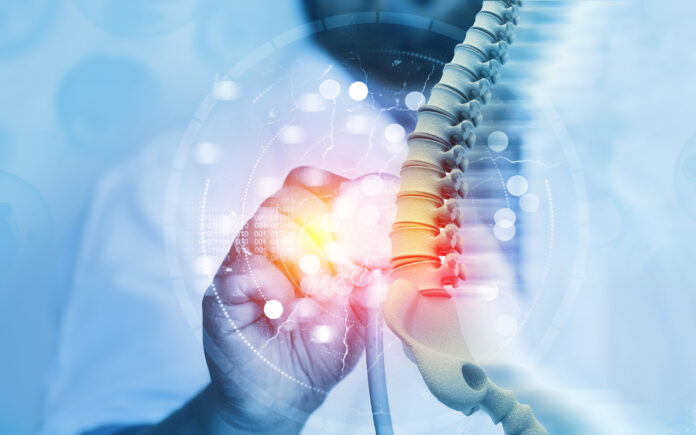Your spinal cord can make its own memories independent of your brain, neuroscientists have found. The discovery opens up new avenues for treating patients in recovery from spinal cord injuries and challenges what we thought we knew about neural circuits outside the brain.
It’s been known for some time that the spinal cord can initiate reflex movements without the brain’s involvement. We have even seen in observational studies that the spinal cord appears to learn and adjust movements based on previous experience. However, the neuronal mechanisms underlying these observations have so far been a mystery.
“Learning and memory is often attributed as functions of the brain exclusively,” Aya Takeoka, a principal investigator at Japan’s RIKEN Center for Brain Science, told Newsweek. “Although scientists knew for more than a century that the spinal cord could learn and adapt movements in the absence of brain input, we did not know how the spinal cord learns and memorize what is has learned.
“Gaining insights into the underlying mechanism is essential if we want to understand the foundations of movement automaticity in healthy people and use this knowledge to improve recovery after spinal cord injury.”
Mohammed Haneefa Nizamudeen/Getty
To explore the roles of these neurons in reflexive learning, Takeoka and her colleagues first set about demonstrating whether the spinal cord’s cells can adapt to sensory inputs in the absence of signals from the brain.
To do so, the team used a pair of mice that had received a spinal cord transection, meaning their spinal cord was cut off from their brains. One mouse was designated as the “control,” the other “experimental.” Both were then dangled from a harness.
When the experimental mouse’s legs dangled too low, it received a brief electric shock. The control mouse received the same shock at the same time, regardless of its leg position.
After just 10 minutes, the legs of the experimental mouse remained high up to avoid any electrical stimulation. The legs of the control mouse, meanwhile, continued to dangle. The next day, the test was repeated, but the mice were reversed (the control mouse was not given shocks when its legs dangled down).
The original experimental mouse still held its legs up high, indicating that its spinal cord had retained the memory from its previous experience. In other words, the spinal cord had learned and remembered to hold the mouse’s legs up high to avoid unpleasant stimulation, independently from the animal’s brain.
So far, the researchers had confirmed that the transected spinal cord could learn and remember independently of the brain, but exactly what neuronal circuitry was at play was not known. To answer this question, the team used another cohort of mice, this time a group of genetically modified mice, each with one of six different sets of spinal neurons disabled. These mice, which had also received a spinal cord transection, then underwent the same protocol as before.
Those mice that had the neurons toward the tops of their spinal cords disabled did not adapt to avoid the electrical stimulation. However, when it came to remembering the electrical stimulation the next day, a group of neurons at the bottom of the spinal cord appeared to be the most critical.
In other words, there appears to be a division of labor when it comes to learning and memory among the neurons of the spinal cord. “The two groups of nerve cells have distinct functions; learning cells are not needed for recalling what the spinal cord had learned, and memory cells were not needed for learning,” Takeoka said.
The team hope that their findings, published in the journal Science, will help in the development of rehabilitative training methods for patients recovering from spinal cord damage.
“Not only do these results challenge the prevailing notion that motor learning and memory are solely confined to brain circuits, but we showed that we could manipulate spinal cord motor recall, which has implications for therapies designed to improve recovery after spinal cord damage,” Takeoka said.
Is there a health problem that’s worrying you? Let us know via [email protected]. We can ask experts for advice, and your story could be featured in Newsweek.
Uncommon Knowledge
Newsweek is committed to challenging conventional wisdom and finding connections in the search for common ground.
Newsweek is committed to challenging conventional wisdom and finding connections in the search for common ground.


